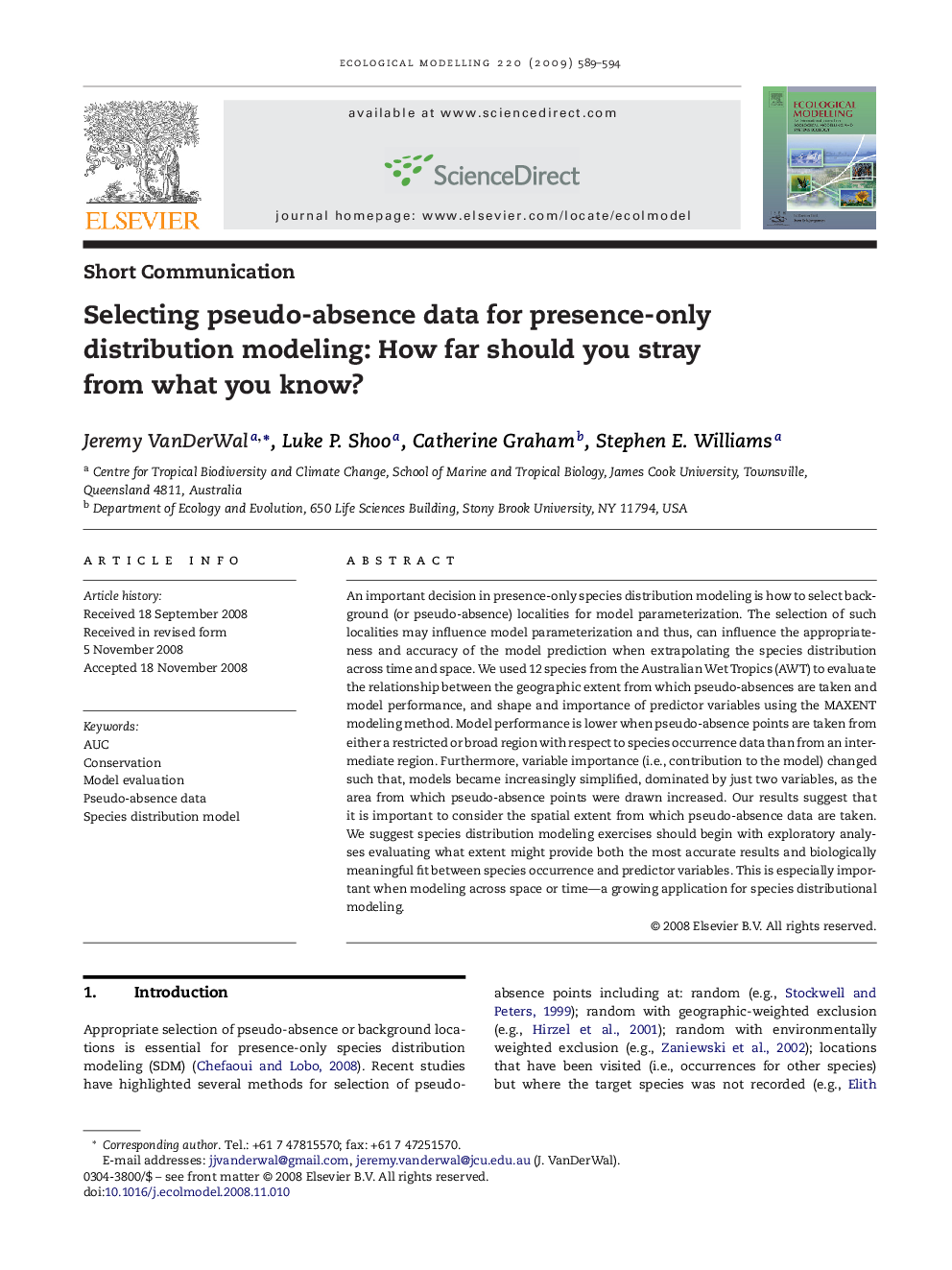| کد مقاله | کد نشریه | سال انتشار | مقاله انگلیسی | نسخه تمام متن |
|---|---|---|---|---|
| 4377708 | 1303441 | 2009 | 6 صفحه PDF | دانلود رایگان |

An important decision in presence-only species distribution modeling is how to select background (or pseudo-absence) localities for model parameterization. The selection of such localities may influence model parameterization and thus, can influence the appropriateness and accuracy of the model prediction when extrapolating the species distribution across time and space. We used 12 species from the Australian Wet Tropics (AWT) to evaluate the relationship between the geographic extent from which pseudo-absences are taken and model performance, and shape and importance of predictor variables using the MAXENT modeling method. Model performance is lower when pseudo-absence points are taken from either a restricted or broad region with respect to species occurrence data than from an intermediate region. Furthermore, variable importance (i.e., contribution to the model) changed such that, models became increasingly simplified, dominated by just two variables, as the area from which pseudo-absence points were drawn increased. Our results suggest that it is important to consider the spatial extent from which pseudo-absence data are taken. We suggest species distribution modeling exercises should begin with exploratory analyses evaluating what extent might provide both the most accurate results and biologically meaningful fit between species occurrence and predictor variables. This is especially important when modeling across space or time—a growing application for species distributional modeling.
Journal: Ecological Modelling - Volume 220, Issue 4, 24 February 2009, Pages 589–594